 |
|||||
|
|||||
| Preview of Stamps Catalogue: VOLUME 1 |
 |
|||||
|
|||||
| Preview of Stamps Catalogue: VOLUME 1 |
Return To Catalogue - Nigeria - Southern Nigeria
Note: on my website many of the
pictures can not be seen! They are of course present in the catalogue;
contact me if you want to purchase it.
1/2 p green 1 p lilac 1 p red 2 p blue 2 p grey 2 p lilac and blue 2 1/2 p blue 3 p brown 3 p lilac and orange 4 p red 4 p lilac 4 p lilac and black 5 p lilac and green 6 p green 6 p olive 6 p lilac 6 p lilac and red 7 1/2 p lilac and red 10 p lilac and yellow 1 Sh orange 1 Sh green and black 2 Sh 6 p olive 2 Sh 6 p green and red 5 Sh blue 5 Sh green and blue 10 Sh brown 10 Sh green and brown Surcharged

'HALF PENNY' and bar on 4 p lilac and black
For the specialist: two types of watermark exist for this issue, 'CA Crown' (1882) and 'CC Crown' (1874). The stamps with CC watermark exist in two types of perforation: 12 1/2 and 14, the CA types is always perforated 14.
The printing was done in two times; the value was printed sererately. Therefore colour differences between the value and the rest of the stamp frequently occur as in the next stamp:
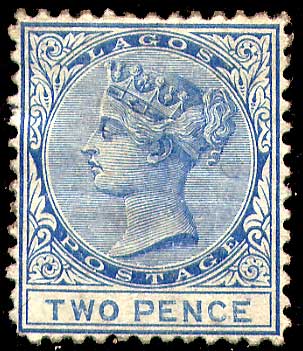
("TWO PENCE" lighter than the rest of the stamp)
The 1 Sh orange exists in two types; the word "ONE SHILLING" measures 16 1/2 mm in the first types and 15 1/2 mm in the second.
Value of the stamps |
|||
vc = very common c = common * = not so common ** = uncommon |
*** = very uncommon R = rare RR = very rare RRR = extremely rare |
||
| Value | Unused | Used | Remarks |
Watermark 'CC Crown', perforation 12 1/2 (1874) |
|||
| 1 p lilac | RR | RR | |
| 2 p blue | RR | RR | |
| 3 p brown | RR | RR | |
| 4 p red | RR | RR | |
| 6 p green | RR | RR | |
| 1 Sh orange | RRR | RR | Both types |
| Watermark 'CC Crown', perforation 14 (1876) | |||
| 1 p lilac | RR | R | |
| 2 p blue | RR | R | |
| 3 p brown | RR | RR | |
| 4 p red | RR | R | |
| 6 p green | RR | R | |
| 1 Sh orange | RRR | RR | Only one type |
| Watermark 'CA Crown', perforation 14 (1882) | |||
| 1/2 p | * | * | |
| 1 p lilac | RR | R | |
| 1 p red | * | * | |
| 2 p blue | RR | RR | |
| 2 p grey | RR | R | |
| 2 p lilac and blue | *** | *** | |
| 2 1/2 p | ** | ** | |
| 3 p brown | RR | RR | |
| 3 p lilac and orange | *** | *** | |
| 4 p red | RR | RR | |
| 4 p lilac | RR | RR | |
| 4 p lilac and black | *** | *** | |
| 5 p | *** | *** | |
| 6 p olive | *** | *** | |
| 6 p lilac | *** | *** | |
| 6 p lilac and red | R | R | 1903 |
| 7 1/2 p | *** | *** | |
| 10 p | *** | *** | |
| 1 Sh orange | *** | *** | |
| 1 Sh green and black | *** | *** | |
| 2 Sh 6 p olive | RRR | RRR | |
| 2 Sh 6 p green and red | RR | RR | |
| 5 Sh blue | RRR | RRR | |
| 5 Sh green and blue | RR | RR | |
| 10 Sh brown | RRR | RRR | |
| 10 Sh green and brown | RR | RR | |
| 1/2 p on 4 p | *** | *** | With double surcharge: RR |
Typical cancels "L" and bars:





(Other cancels)
Forgeries, example:
Note the strange perforation (very sharp teeth). It appears as if an impressed watermark has been used on the above forgery (can even be seen from the front). Quite probably the 1 p lilac and 4 p red have also been forged by the same forger (probably Oneglia), I've seen pictures of those with forged watermark but with 'normal' perforation. The next forgery of Malta seems to have been made by the same forger (it also has the impressed watermark and the very sharp teeth in the perforation):
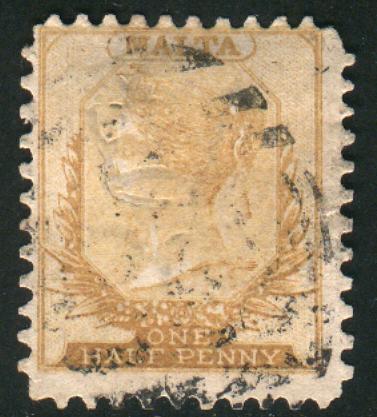
(Forgery of Malta, probably made by the same forger)



Forgery of the 10 Sh and 2 p values with impressed watermark. The
design is very similar to the above forgery, but the perforation
is better done. I presume this forgery was made by the Italian
stamp forger Oneglia.
The next forgeries have an outline on the nose of the Queen (not present in the genuine stamps). Also compare the position of the "P" of "PENNY" and the "T" of "POSTAGE" in the 1 p stamp with a genuine stamp:
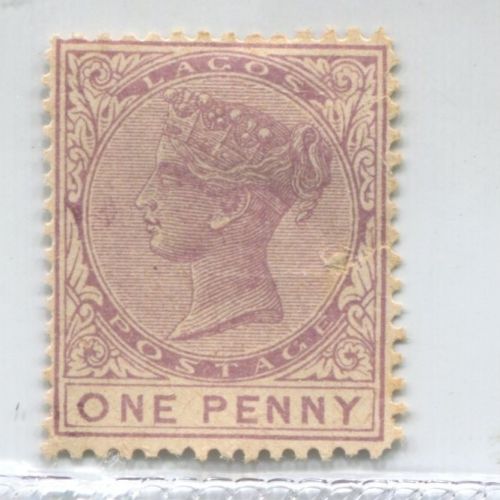






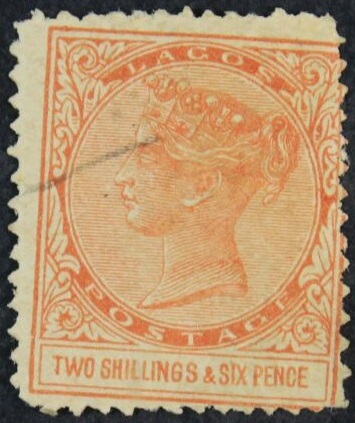
These are likely been made by the stamp forger Oneglia as well.


Primitive forgery of the 2 p blue value. An illustration in La
Gazette des Timbres by Pierre Mahe shows the same 'forgery' (face
of Queen different from the genuine); see next image (reduced
size).


2 Sh 6 p forgery with printed perforation and some Nieuwe
Republiek. Some kind of cut from a card?
I know that the forger Sperati has made forgeries of the values 2 Sh 6 p olive, 5 Sh blue and 10 Sh brown. These forgeries were printed on genuine paper (on genuine stamps with bleatched out designs). I don't know the distinguishing characteristics of these forgeries, if anybody does, please contact me!

(Blackprint of a Sperati forgery, the value seems to have been
forged seperately by him, as the 5 Sh shows on top of this image)

Forged value inscriptions as used by Sperati.

Forged cancel as used by Sperati


Examples of Sperati forgeries.
1/2 p green 1 p lilac and black on red 2 p lilac and blue 2 1/2 p lilac and blue on blue 3 p lilac and orange 6 p lilac 1 Sh green and black 2 Sh 6 p green and red 5 Sh green and blue 10 Sh green and brown
For the specialist: two types of watermark were used, 'CA Crown' and 'Multiple CA Crown'. The perforation is 14.
Value of the stamps |
|||
vc = very common c = common * = not so common ** = uncommon |
*** = very uncommon R = rare RR = very rare RRR = extremely rare |
||
| Value | Unused | Used | Remarks |
Watermark 'CA Crown' (1904) |
|||
| 1/2 p | *** | *** | |
| 1 p | *** | * | |
| 2 p | R | *** | |
| 2 1/2 p | *** | *** | |
| 3 p | *** | *** | |
| 6 p | RR | R | |
| 1 Sh | RR | RR | |
| 2 Sh 6 p | RR | RR | |
| 5 Sh | RR | RR | |
| 10 Sh | RRR | RRR | |
| Watermark 'Multiple CA Crown' (1904) | |||
| 1/2 p | * | * | |
| 1 p | ** | * | |
| 2 p | *** | ** | |
| 2 1/2 p | *** | *** | |
| 3 p | *** | *** | |
| 6 p | *** | *** | |
| 1 Sh | R | *** | |
| 2 Sh 6 p | RR | RR | |
| 5 Sh | RR | RR | |
| 10 Sh | RR | RR | |
Forgeries exist, made of lower valued stamps, from which the value has been erased and a new higher value printed instead (The Philatelic Record, Vol. XXIX, 1907, page 17).
With German mailboat cancel:
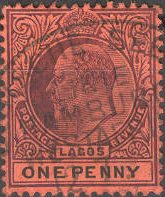
(With cancel "Deutsche seepost linie Hamburg
Westafrika")